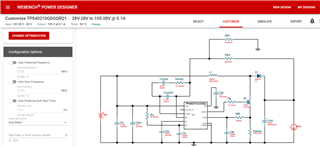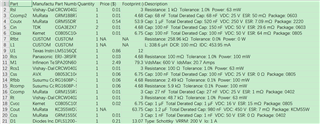Other Parts Discussed in Thread: TPS40210-Q1, TPS40210
I find in the product filter page the output voltage range of TPS40210-EP is (7-9)V. My application need a 105V output.

I make a design at Webench power design and find TPS40210-Q1 meets my application. I think TPS40210-EP meets too.

Please verify whether TPS40210-EP can achieve the 105V output voltage. Is the product filter list is incorrect?
when I use Webench I can find

What is the meaning of Total Derated Cap? Is this mean I should plus 68nF in this example, 68+68=136nF, is this mean I'd better use a 136nF capacitor?
This is the first time I use webench, I feels good. Does this only can be used when designing power system?


